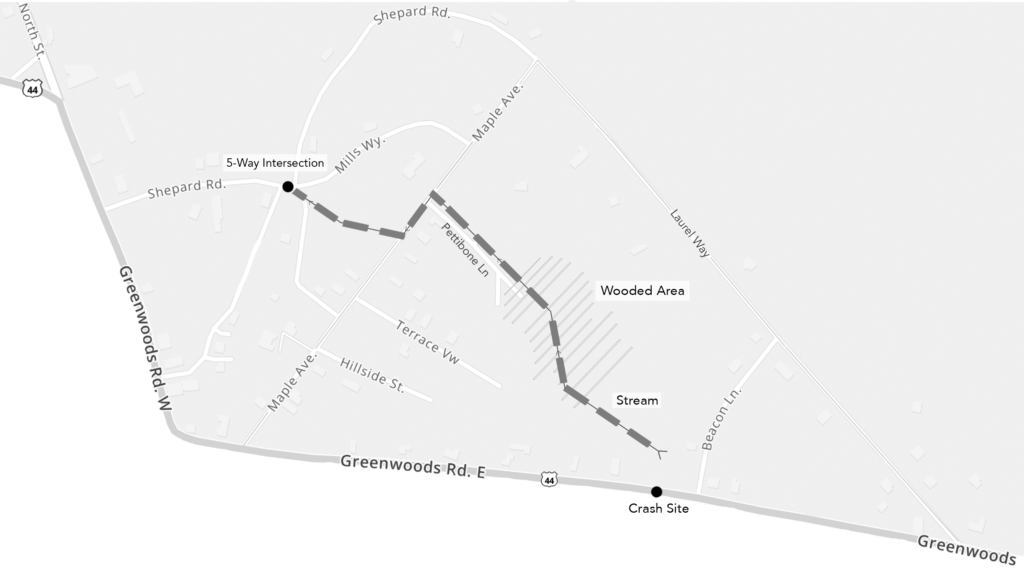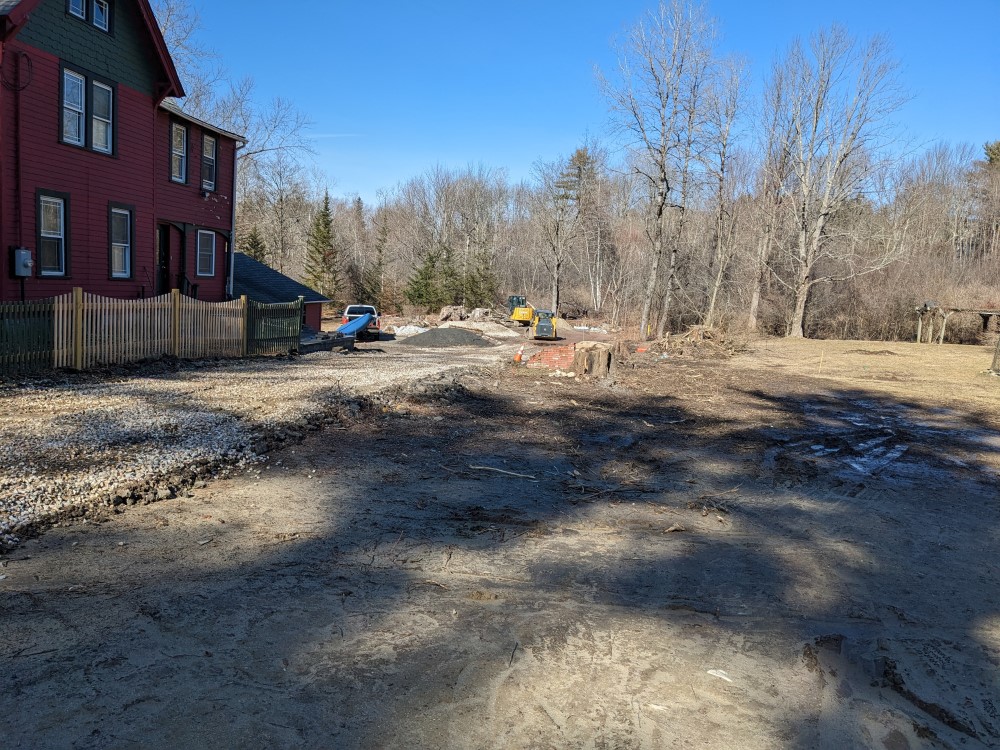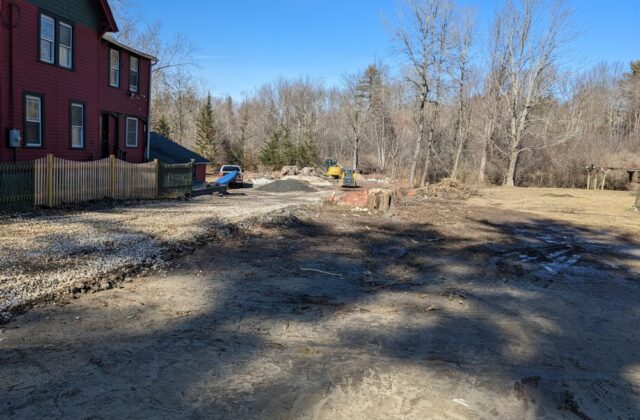Update on Gas Spill Remediation
More cleanup … more lawyers
By Joe Kelly
The tanker truck crash last November that sent 8,200 gallons of gasoline cascading past homes, through backyards and into the waterways of central Norfolk also set in motion what’s likely to be a prolonged set of legal actions.

About a half-dozen property owners and residents along Route 44, Pettibone Lane and Maple Avenue (the primary path of the spill)—as well as the town of Norfolk itself—have retained attorneys. The issues likely to be contested include:
- Health risks from exposure to toxic chemicals released by the spill, such as benzene
- Costs, dislocations and inconveniences incurred by those directly impacted by the spill, such as the cost of temporary housing or loss of rental income
- Reimbursement for costs borne by the town—already over $200,000 and rising
- The accuracy, thoroughness and completeness of the cleanup. It’s being conducted under the direction of the Connecticut Department of Energy and Environmental Protection (DEEP) with funding through the gasoline trucker and its insurance carrier. What happens if those funders declare “mission accomplished” and others disagree?
- The impact on real estate values. If a homeowner in the path of the spill had to sell their home tomorrow, could they? How much longer would it take? How much less would they receive? How long would that situation continue?
“You’ve got a range of issues that need to be sorted out here,” said Peter C. Bowman, an attorney with BBB Attorneys, a personal injury law firm based in Stratford that is representing several families that live near the crash site on Route 44.
Norfolk has retained Shipman & Goodwin of Hartford, which has a team of environmental lawyers representing the town, including Andrew Davis, who is well known in the field. According to First Selectman Matt Riiska, the attorneys are overseeing negotiations with the insurers and will also defend the town if needed.
The Path of the Spill
The legal actions are underway while active testing and cleanup continues all along the path of the spill. When the truck clipped a telephone pole and flipped on its side shortly before 6 a.m. on the morning of Nov. 5, the vast majority of the 8,200 gallons in its tank appears to have drained downhill in a northerly direction into the area bounded by Route 44, Laurel Way and Maple Avenue. (See map.)
Channeled largely by storm drains, the gas seeped into the ground around the homes and backyards lining the roadway there and then flowed into a damp, wooded area where it entered a stream heading toward Pettibone Lane and Maple Avenue.
“We saw gas flowing four inches thick,” said Clint Webb, who lives on Route 44 near the crash site, is also an environmental consultant and serves on Norfolk’s wetlands commission. “It was roaring through there.” Webb is one of the residents that has retained BBB.
The stream carrying the gas continued west in a ditch along Pettibone Lane, through a culvert under Maple Avenue and then to a brook that flows downhill, first to the five-way intersection at Mills Way, Emerson Street, John J. Curtiss Road and Shepard Road and finally through culverts leading to Wood Creek and the Blackberry River.
In the initial response, tons of contaminated earth were removed from the properties near the crash site, and some 90,000 gallons of contaminated water were captured by tanker trucks positioned at the five-way intersection. Tests found no evidence of gas in the Blackberry River, but Webb believes based on what he saw some amount of gas had already made its way there. “It was flowing too fast,” he said. “They could never have gotten there in time to stop it all.”
Remediation and Testing Continue
The once leafy neighborhood near the crash site now has the look of a large construction or landscaping project with tree stumps, muddy tire tracks and heavy equipment scattered about. Testing has found pollution in the groundwater there, so more earth may be removed. And the storm drains leading from the road to the stream are being replaced, according to Jeff King of Verdantas, the testing and remediation company retained by the state DEEP.

On Maple Avenue, a large concrete traffic barrier protects a set of collection wells dug into the front yard of a home just south of Pettibone. Polluted water collecting in those wells is pumped out on a regular basis. In the brook leading from Maple Avenue to the five-way intersection there are more collection wells and absorbent socks, with polluted water regularly pumped from there as well.
Gas continues to be detected in the surface water and sediment of the stream running through the wooded area and along Pettibone, but the levels have declined since the spill, according to King.
Significantly, however, testing has not detected gas seeping into the groundwater on the Laurel Way side of the stream. If that determination holds up, it could mean that the full spread of the contamination may be more limited than was originally feared and confined more tightly to the stream and ditch along Pettibone.
In addition to tracking water contamination, the DEEP has engaged an industrial hygienist to analyze air quality inside homes in the area of the spill. The tests, which were conducted primarily in December, did not identify any instances in which the presence of toxic substances, such as benzene, exceeded what is allowable under Connecticut state standards.

Heated Exchanges
The involvement of attorneys and the specter of lawsuits has led to some heated confrontations, including one that boiled over on Jan. 31 during the monthly meeting on the spill held at the Botelle School.
Ire was directed at Webb, who acknowledged that he and other property owners kept testers from Verdantas from digging sampling wells on their properties, hoping to get leverage to force the trucker’s insurance company to cover the cost of temporary housing for more residents. Webb and others have since relented: testing has taken place, and it has identified more groundwater contamination on their properties.
Impact on Property Values
While testing and cleanup will continue for months if not years, legal activity is expected to ramp up fairly soon. Bowman said he expects to be ready this spring with proposed settlement packages on behalf of his clients.
The impact on property values is likely to be a significant aspect of ongoing negotiations.
David Torrey, who owns a rental property at the crash site, said he is in a wait-and-see mode. “Obviously there is loss of rental income and loss of property value, but I won’t know the full extent of the situation for a year or more.”
According to Dr. Robert A. Simons, a Cleveland-based expert in real estate economics and the author of “When Bad Things Happen to Good Property,” a wide range of factors dictate the actual impact including the extent of the contamination, the completeness of the cleanup, the lapse of time since the incident and the likelihood of it happening again.
“If there is contamination detected on a property it has to be disclosed as part of any sale,” Simons explained. “Whenever disclosure is required, values are impacted.” According to Simons, who has studied a range of environmental disasters, a typical rule of thumb for situations involving groundwater contamination is an immediate hit of 15 percent on property values, diminishing as time elapses.
A significant factor in Norfolk is that most homes in the community rely on a public water system, which tests have shown was not contaminated, as opposed to private wells which might have been vulnerable to becoming polluted now or in the future. If there was groundwater contamination and private wells, the potential impact on value would be greater and last longer, said Simons.
Riiska said the town has submitted claims of $230,000 to the insurance carrier, much of it to replace fire department equipment used during the emergency response. The town is also seeking reimbursement for the long hours spent by emergency response workers in the immediate aftermath of the spill. Riiska said the town should also be reimbursed for legal costs, which he expects to run well over $50,000.
Riiska said the town is fully prepared to use legal action to ensure that the cleanup is conducted as thoroughly and responsibly as possible. “Our job is to make sure all the parties are doing their job,” said Riiska.

